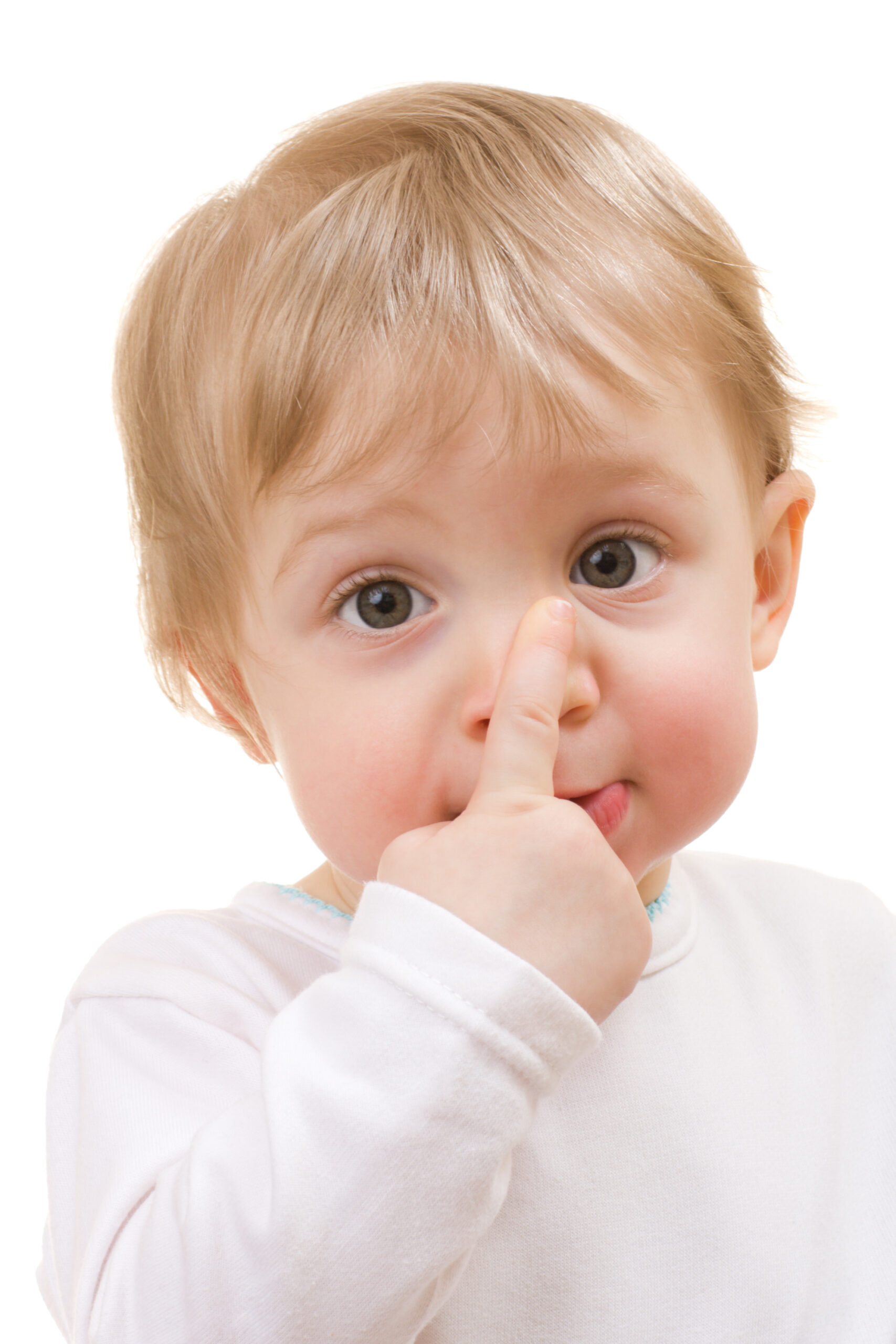Imagine you are a young child who has just learned to pick stuff up with your thumb and first finger. You have a small object you would like to save for later. Where do you put the object?
A. your nose
B. your ear
C. your mouth
D. any of the above
The correct answer is D. If the object is something large like a penny the best choice is to swallow it. Parents often find hidden “treasures” in their child’s diaper after they have surreptitiously passed through the intestine. Other smaller objects are more handily placed in the nose or ear. Last night I pulled a wad of chewing gum out of a 2-year-old’s right nostril. “Ah!” the mother exclaimed. “Grandma gave him a gumball machine for Christmas.”
The gum had been in his nose for at least a week, hidden in its secret cave only to be revealed by the telltale sign of foul smelling nasal discharge.
A foreign body in your child’s nose, ear or intestinal tract will declare itself in one of several ways. Most commonly your child may approach you and say, “Excuse me. I have put something in my nose and I would like it out now.”
Alternatively, a parent will notice mucus coming from the child’s nose. The clue here is that the child has far more drainage from one nostril than from the other. A cold virus should cause drainage from both sides. On that note, kids have a preference for putting stuff in the right nostril and right ear because most kids pick things up with their right hand and it is just harder to place the object in the left side of their body.
Last holiday season I pulled a red puffy craft sticker from a little girl’s right nostril. “Oh!” the mother declared. “Grandma was putting that sticker on her nose and pretending to be Rudolph yesterday.” What is the common denominator in these two cases? Grandma. (Just kidding, mom.) No person is to blame when kids put stuff in their ears and noses. It simply seems like a good idea to a young child; and there is no better way to learn not to put stuff in your face than to give it a try.
My favorite ear & nose foreign bodies
- Barbie shoe
- 1×1 lego
- piece of sponge
- pea
- cockroach
- tip of a blue crayon
- cell phone case decorative jewel
- fish tank pebble
I asked a six-year old boy why he put an eraser in his ear. He said he didn’t know how it got in there. His answer seemed unrevealing, but really his answer demonstrates that children, even as old as six years, have less frontal lobe capacity to inhibit their actions. They don’t have an inner voice or experience that tells them putting something in their ear is not such a good idea.
If you catch your child putting an object in his mouth, take the opportunity to point out “we don’t put things in our mouths that aren’t food. And don’t put things in your ear or nose either.”
If you know (or suspect) your child has something in her ear or nose, see your doctor. We have tools and extra hands to help hold your child securely to remove the object. There is no particular rush to get an object out. There is virtually no risk that a normal child will inhale an object from their nose into their lungs and choke. It is possible to snort back an object in the nose and swallow it. I couldn’t remove a broken metal keychain part from a patient’s nose last year. When I left the exam room, he snorted and swallowed and told his father he was “all better now.” An abdominal x-ray showed the metal chunk in his stomach and it made its way through the intestine by the following night.
A normal healthy child with intact airway reflexes will not inhale a foreign object into their lungs. True emergencies are “button” batteries (like a watch battery) and strong magnets. Low-voltage electrical current from the battery causes tissue destruction and the alkaline contents can very quickly leak out and cause a severe chemical burn.
Another option for nasal foreign bodies is the “parent’s kiss”. A parent can close off the good nostril and blow gently into the child’s mouth to dislodge the object in the other nostril. This works best on soft or smooth objects like beads that completely occlude the passageway and is perfectly safe.
While foreign bodies in the nose and ear are usually hard to miss, sometimes the symptoms can be subtle. Consider a foreign body if your child has new snoring, nasal irritation, sneezing or ear pain, but doesn’t seem to have any other cold symptoms.
Cook, S., Burton, M., & Glasziou, P. (2012). Efficacy and safety of the” mother’s kiss” technique: a systematic review of case reports and case series.Canadian Medical Association Journal, cmaj-111864.







Nose Treasures! Great blog entry. I didn’t know you could snort and swallow the object.
Do you remember when Ryan put ‘something blue’ up his nose? It was the hub from a toy ambulance wheel. I also wondered if you remember when you were about 11 years old and were sewing and the needle hit your finger and went right through it? OMG! I was so upset and guilty and called our pediatrician and she assured me everything would be OK.
“Excuse me. I have put something in my nose and I would like it out now.” Wow, what articulate 2-years-old you’ve taken care of! 😉
Just kidding! Great advice and information, as always.